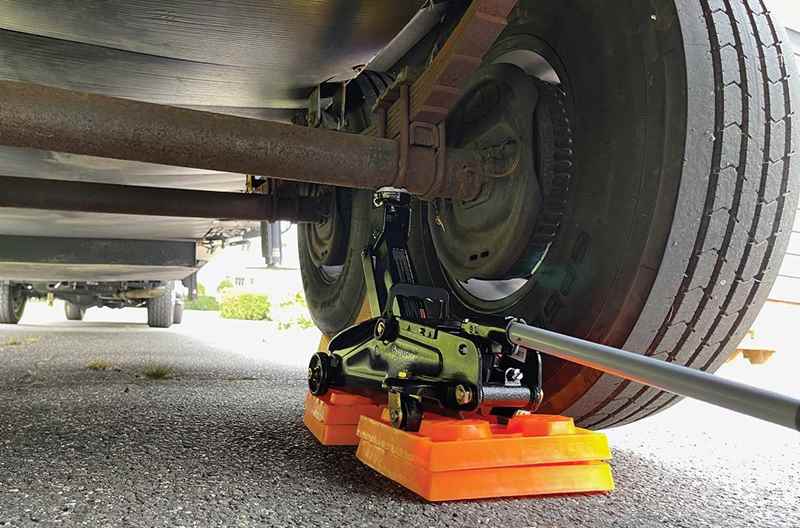Dangerous Driving Environments for Distracted Drivers: Complete Safety Guide
Understand distracted drive risks
Distracted driving transform routine journeys into potential disasters. When drivers divide their attention between the road and other activities, certain environments become exponentially more dangerous. The combination of environmental challenges and reduce focus create a perfect storm for accidents.
Every drive environment present unique hazards, but some conditions amplify the risks associate with distraction. Recognize these high risk scenarios help drivers understand when they need maximum focus and attention.
Highway driving: the deceptive danger zone
Highways present one of the virtually dangerous environments for distracted drivers. The ostensibly straightforward nature of highway driving create a false sense of security that encourage complacency.
High speed consequences
At highway speeds, every second of distraction cover significant distance. A driver travel at 70 mph cover roughly 103 feet per second. A brief three-second glance at a phone means travels the length of a football field while entirely blind to road conditions.
The physics of high speed crashes make highway distraction especially deadly. Impact forces increase exponentially with speed, turn minor mistakes into catastrophic events. Emergency response times besides increase on highways, make survival more challenging.
Merge zones and entrance ramps
Highway merge areas demand split second timing and constant awareness. Distracted drivers oftentimes misjudge gaps in traffic or fail to notice vehicles in their blind spots. The acceleration require for safe merging require precise coordination that become impossible when attention is divide.

Source: medium.com
Construction zones on highways create additional complexity. Lane changes, reduced speeds, and worker presence require heighten awareness that distracted drivers can not provide.
Urban intersections: complexity multiplied
City intersections rank among the near hazardous locations for distracted drivers. The convergence of multiple traffic streams, pedestrians, cyclists, and complex signal systems create an environment where split second decisions determine safety.
Multi-modal traffic conflicts
Urban intersections involve cars, trucks, buses, motorcycles, bicycles, and pedestrians share the same space. Each mode of transportation follow different rules and movement patterns. Distracted drivers struggle to process this complexity, oftentimes focus on one element while miss others.
Right turn on red situations exemplify this challenge. Drivers must simultaneously monitor oncoming traffic, pedestrian crossings, and signal changes. Distraction during these maneuvers often result in pedestrian strikes or side impact collisions.
Signal timing and decision points
Traffic signals create decision points where drivers must speedily assess whether to stop or proceed. Distracted drivers oftentimes make these critical decisions with incomplete information, lead to red light violations or sudden stops that cause rear end collisions.
Yellow lights present particular challenges. The decision to stop or accelerate require immediate assessment of speed, distance, and follow traffic. Distracted drivers lack the situational awareness necessary for these split second judgments.
School zones: unpredictability amplify
School zones combine reduce speed limits with extremely unpredictable pedestrian behavior. Children’s tendency to dart into streets without warning create an environment where constant vigilance is essential.
Child pedestrian behavior
Children lack the cognitive development to systematically make safe pedestrian decisions. They may chase balls into streets, emerge from between parked cars, or cross accidentally. Distracted drivers can not anticipate or react to these sudden movements.
School dismissal times create additional chaos. Large groups of children, combine with parent pickup traffic, create congestion and confusion that require maximum driver attention.
Reduced reaction time requirements
Lower speed limits in school zones exist because children require more time to recognize and avoid vehicles. Yet, these same speed limits create a false sense of safety that encourage driver complacency. Distracted drivers may feel that slower speeds provide adequate safety margins, not realize that their delay reaction times eliminate this buffer.
Adverse weather conditions
Weather relate driving challenges become exponentially more dangerous when combine with distraction. Rain, snow, fog, and ice demand increase follow distances, reduced speeds, and heighten awareness.
Reduced visibility scenarios
Fog, heavy rain, and snow reduce visibility while require drivers to process information more cautiously. Distracted drivers attempt to use phones or other devices during these conditions oftentimes miss critical visual cues about road conditions, other vehicles, or obstacles.
Nighttime driving present similar challenges. Reduced visibility require greater attention to headlight patterns, reflective markers, and subtle changes in road conditions. Distraction during night drive importantly increase accident risk.
Traction and control issues
Wet or icy roads require smooth, deliberate inputs to maintain vehicle control. Distracted drivers may make sudden steering or brake movements that cause skids or loss of control. The delayed recognition of change road conditions compound these risks.
Hydroplane situations develop quickly and require immediate, appropriate responses. Distracted drivers frequently miss the subtle signs of reduce traction and fail to make necessary adjustments before lose control.
Construction zones: complexity and confusion
Construction zones alter familiar traffic patterns while introduce workers, equipment, and change lane configurations. These dynamic environments require constant attention to temporary signs, flaggers, and modify traffic flows.
Change traffic patterns
Construction zones oftentimes feature lane shifts, temporary signals, and reduce speeds. Distracted drivers may follow GPS directions or habitual routes that no longsighted apply, lead to dangerous situations or worker endangerment.
Flaggers direct traffic require immediate response to hand signals and instructions. Distracted drivers may miss these crucial communications, create hazardous situations for workers and other motorists.
Worker safety considerations
Construction workers operate in proximity to traffic, rely on driver attention for their safety. Distracted drivers pose a direct threat to worker lives, with construction zone fatalities remain a persistent problem.
Heavy equipment enter and exit work zones create additional hazards. Distracted drivers may not notice these large, decelerate move vehicles until collision become unavoidable.
Rural roads: hidden dangers
Rural roads present unique challenges that become deadly when combine with distraction. Narrow lanes, limited shoulders, and unexpected obstacles require constant vigilance.
Limited infrastructure
Rural roads oftentimes lack guardrails, adequate lighting, and wide shoulders. Distracted drivers who drift from their lanes face immediate consequences include rollovers, tree strikes, or head on collisions.
Sharp curves and hills limit sight distances, require drivers to anticipate potential hazards. Distracted drivers can not maintain this forward moving thinking approach, oftentimes find themselves in dangerous situations with limited escape options.

Source: easydrivingtest.com.au
Wildlife and agricultural hazards
Rural areas feature cross wildlife, farm equipment, and livestock that can appear abruptly. Distracted drivers lack the awareness necessary to anticipate and avoid these hazards.
Large agricultural equipment moves slow and may occupy entire roadways. Distracted drivers approach these vehicles at high speeds face severe collision risks if they fail to recognize the situation in time.
Parking lots: low speed, high risk
Parking lots create complex environments where vehicles, pedestrians, and shopping carts interact in unpredictable patterns. The low speed nature of parking lot driving encourage casual attention that can lead to accidents.
Pedestrian density
Shopping center parking lots feature high pedestrian traffic with people focus on shop quite than vehicle awareness. Distracted drivers back out of spaces or navigating aisles often strike pedestrians who assume drivers are pay attention.
Children in parking lots present particular risks. Their small stature make them difficult to see, while their unpredictable behavior create sudden hazards that require immediate driver response.
Complex traffic flows
Parking lots lack the structured traffic patterns of public roads. Vehicles approach from multiple directions, pedestrians cross haphazardly, and shopping carts create obstacles. Distracted drivers can not process this complexity efficaciously.
Back maneuvers in parking lots require careful observation of multiple areas simultaneously. Distracted drivers oftentimes focus on one direction while miss hazards from other angles.
Prevent distracted driving accidents
Understand dangerous environments represent solitary the first step in prevent distracted driving accidents. Implement practical strategies help drivers maintain focus during high risk situations.
Technology management
Modern vehicles offer hands-free calling and voice activate navigation systems that reduce the need for manual device interaction. Yet, eventide these systems create cognitive distraction that can be dangerous in complex driving environments.
The safest approach involve complete all technology interactions before enter high risk areas. Drivers should program navigation systems, adjust music, and handle phone calls before encounter construction zones, school areas, or adverse weather.
Environmental awareness
Recognize high risk driving environments allow drivers to increase their attention levels proactively. When approach intersections, construction zones, or school areas, drivers should eliminate all potential distractions and focus exclusively on drive tasks.
Weather conditions that reduce visibility or traction require similar attention increases. Drivers should pull ended safely to handle urgent communications instead than attempt to multitask during challenging conditions.
Legal and insurance implications
Distracted drive accidents in high risk environments oftentimes carry severe legal consequences. Courts consider the drive environment when assess negligence, with distraction in school zones or construction areas typically result in enhance penalties.
Liability considerations
Insurance companies investigate accident circumstances cautiously, with distracted driving in dangerous environments potentially affect coverage decisions. Drivers may face increase premiums or coverage limitations follow distracted driving incidents.
Criminal charges become more likely when distracted driving results in injuries or fatalities in high risk areas. Vehicular homicide or assault charges may apply when distraction contribute to severe accidents in school zones or construction areas.
Build safer driving habits
Develop consistent attention habits help drivers maintain focus careless of environmental challenges. Regular practice of distraction free driving create automatic responses that persist during stressful or complex situations.
Driver education should emphasize the relationship between environmental complexity and distraction risk. Understand how different driving conditions amplify distraction dangers help drivers make better decisions about when to engage with technology or other potential distractions.
The virtually dangerous driving environments for distracted drivers share common characteristics: complexity, unpredictability, and reduce margin for error. Whether navigate busy intersections, construction zones, or adverse weather, distracted drivers face exponentially increase risks that can result in severe consequences. Recognition of these high risk environments, combine with proactive attention management, represent the best strategy for prevent distracted driving accidents and ensure road safety for all users.



